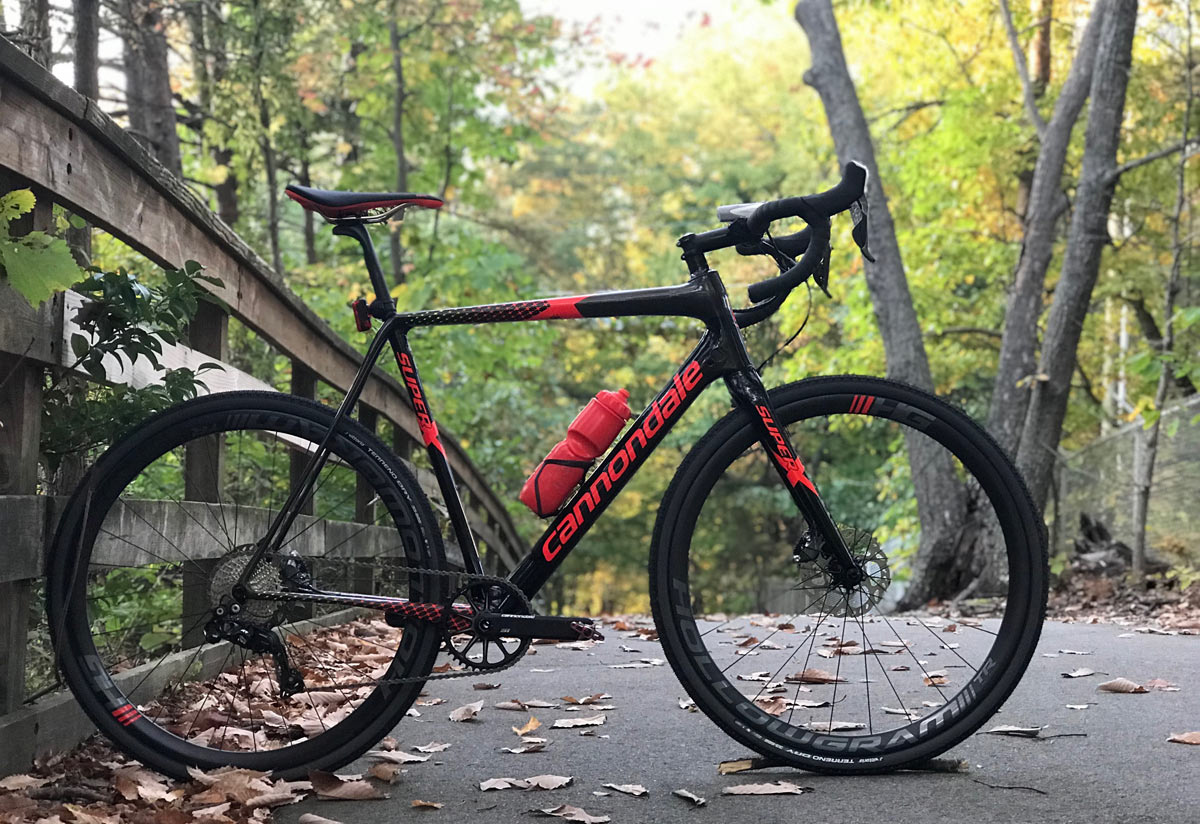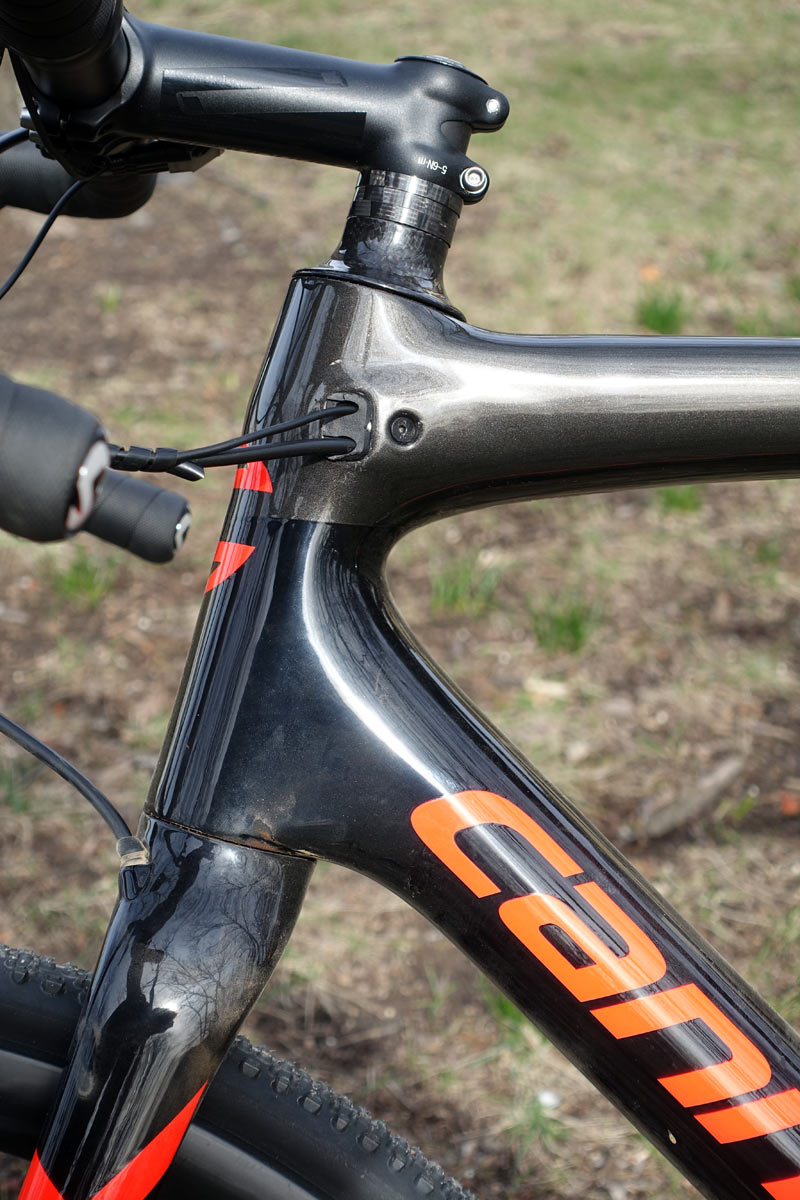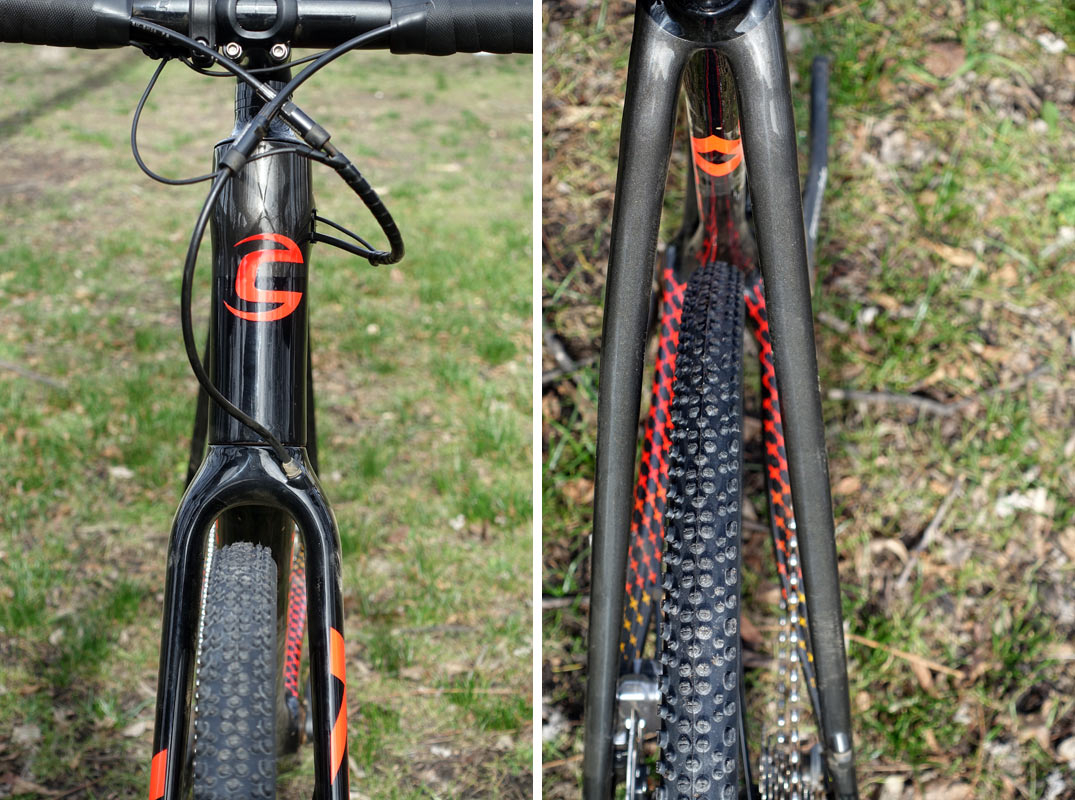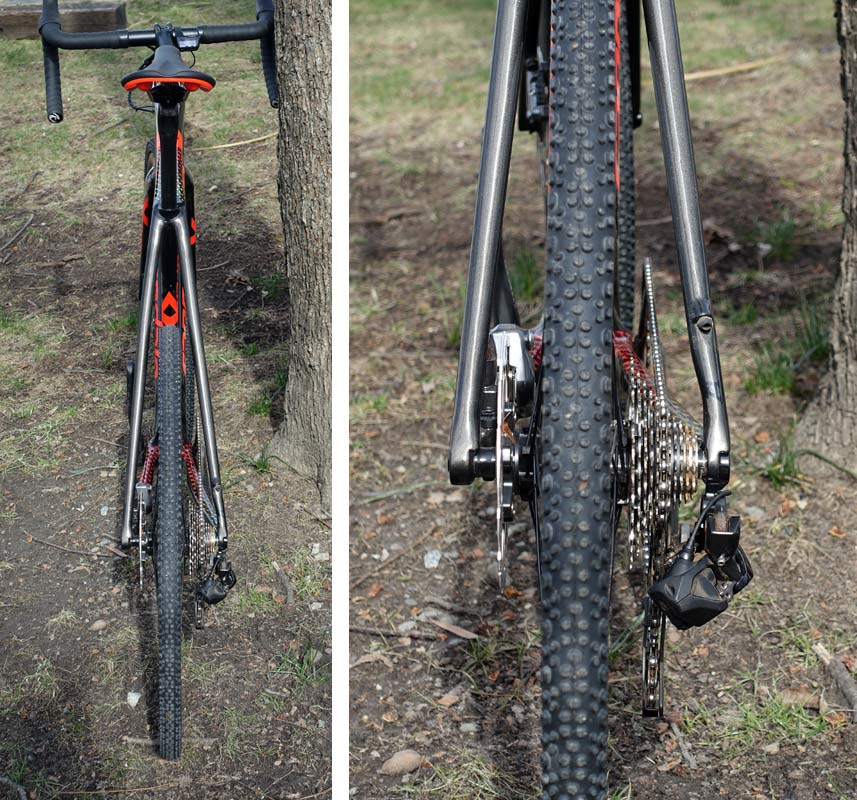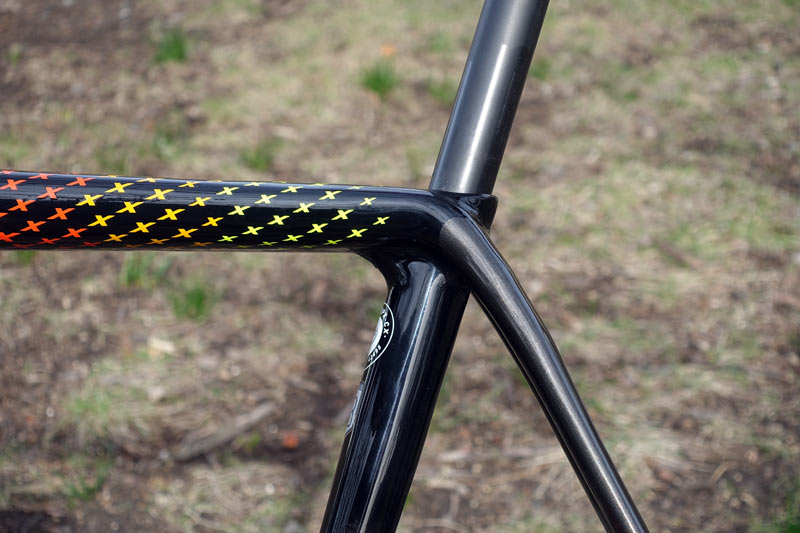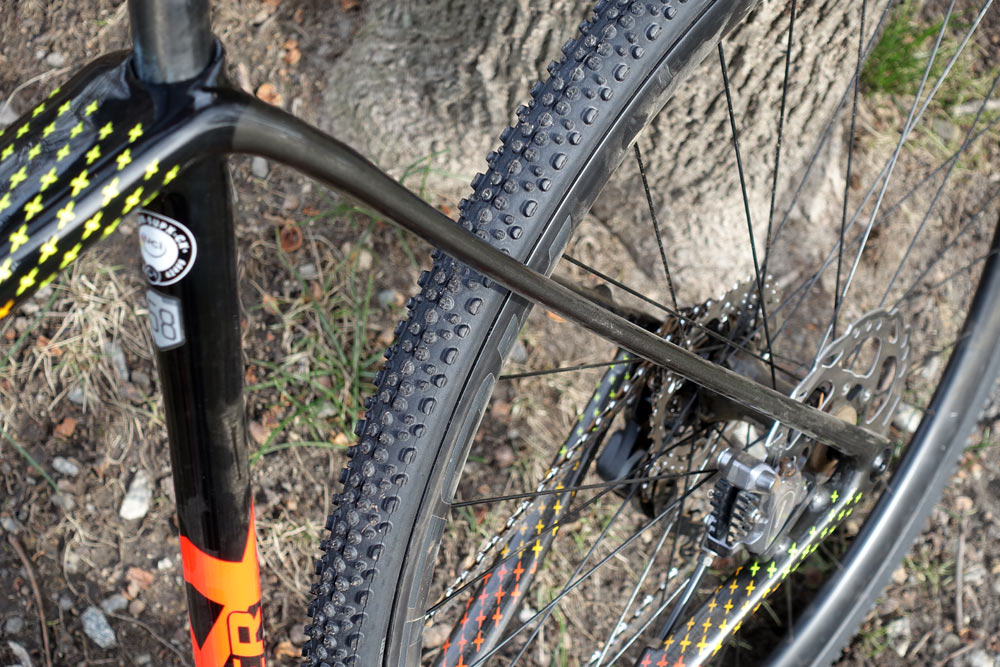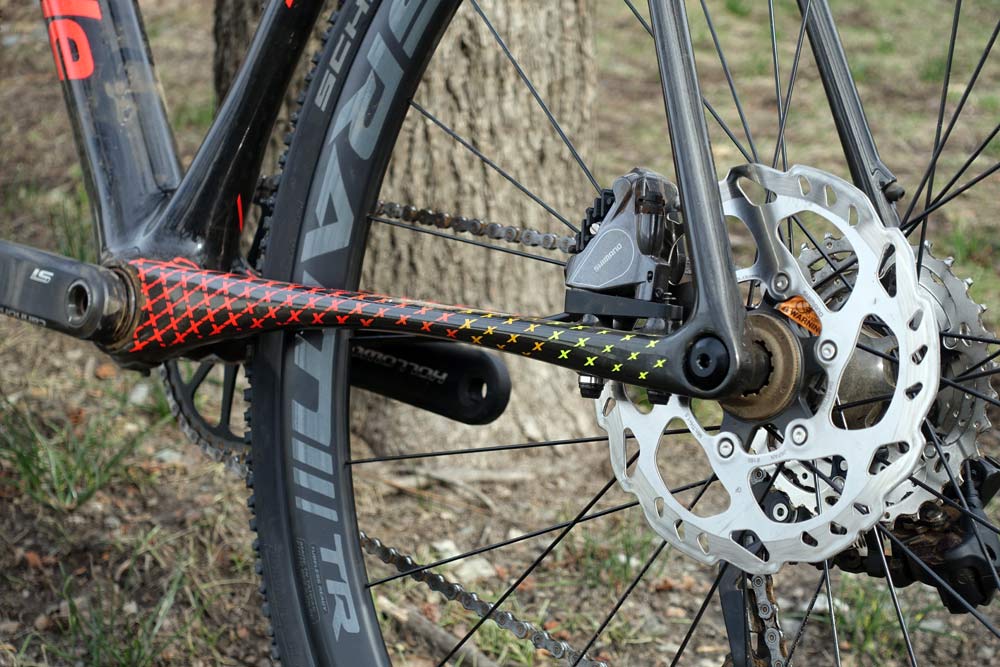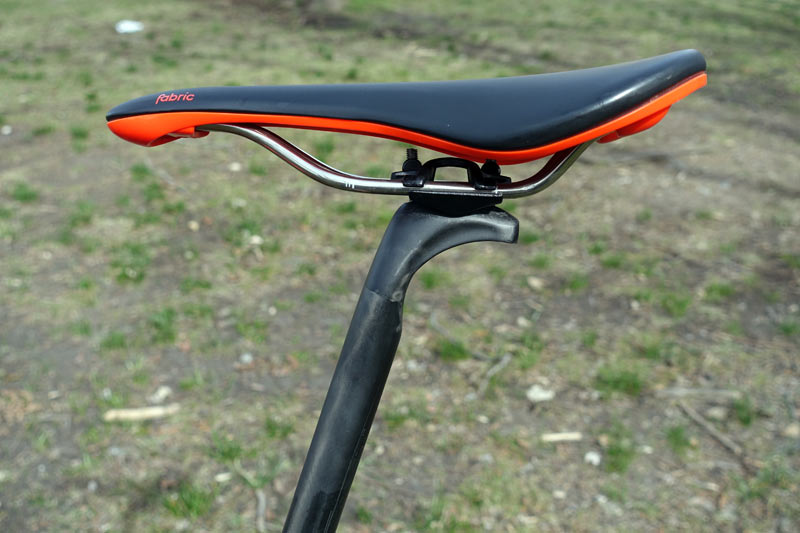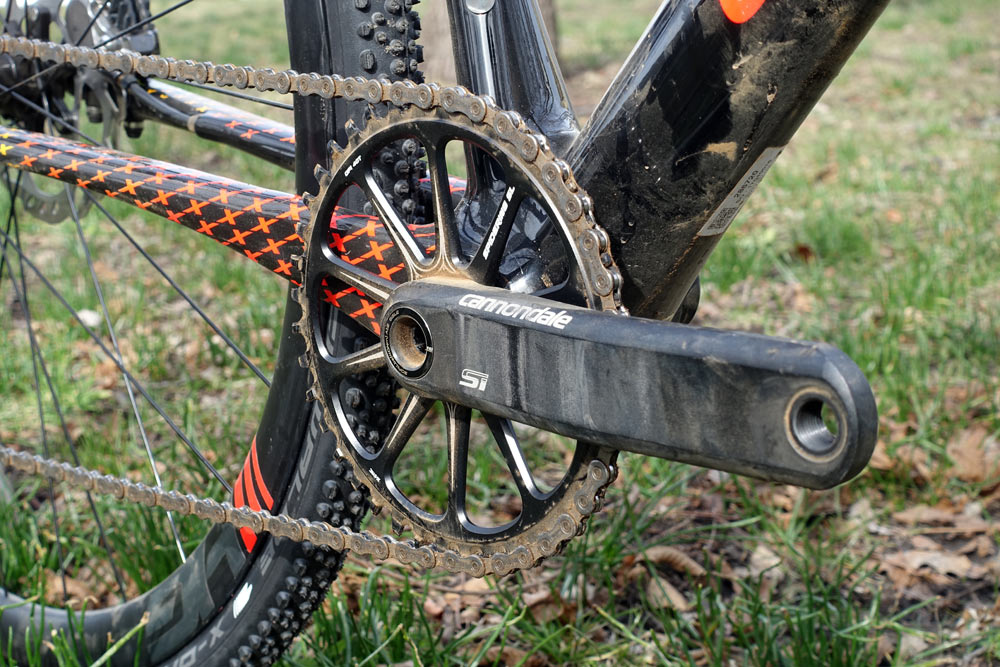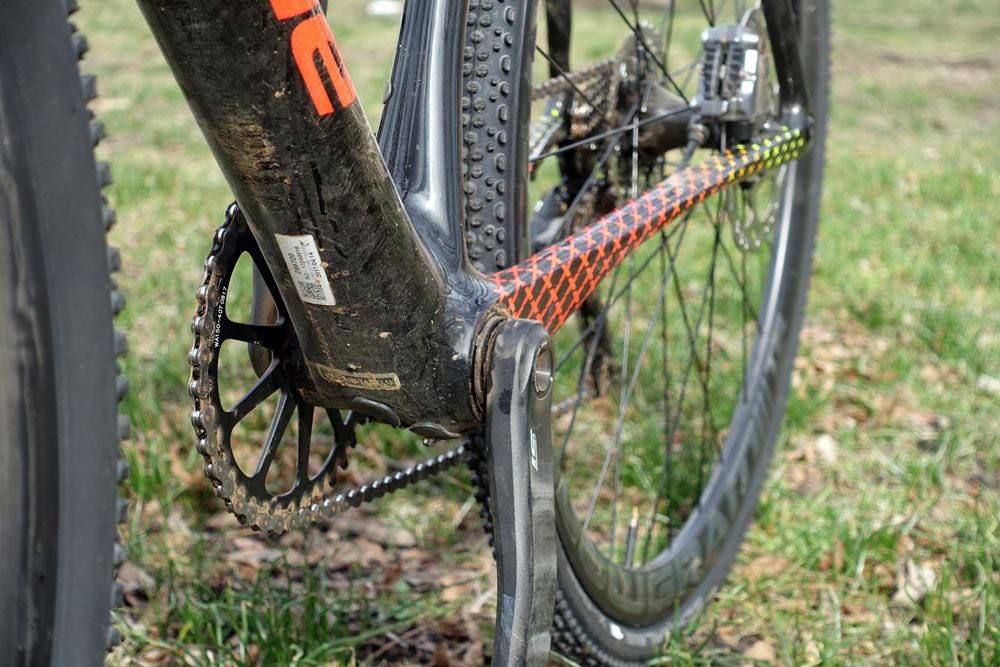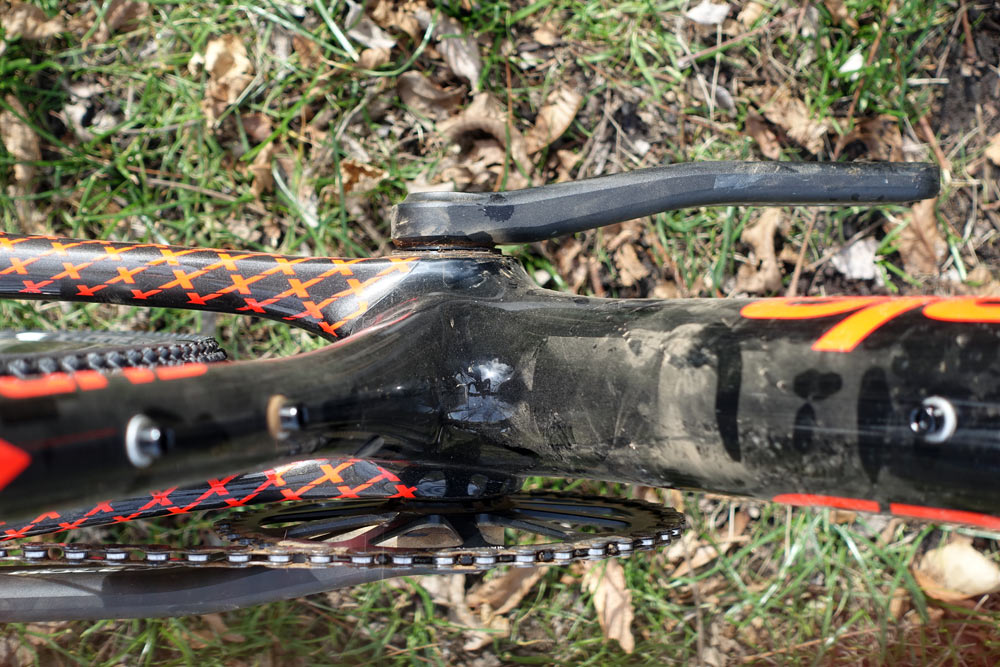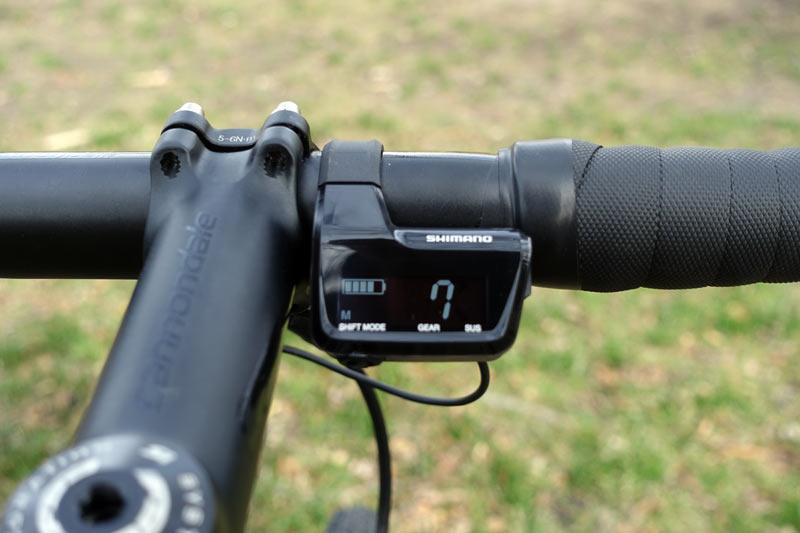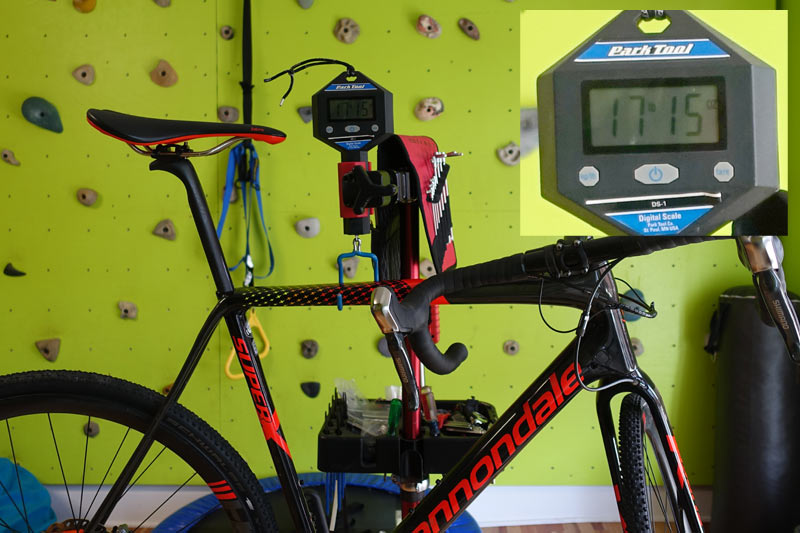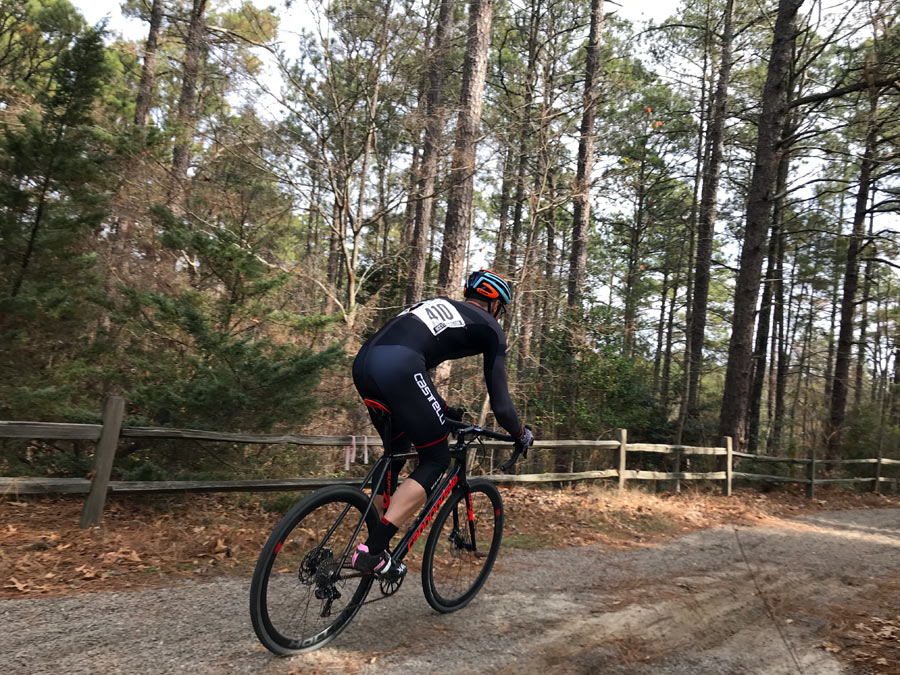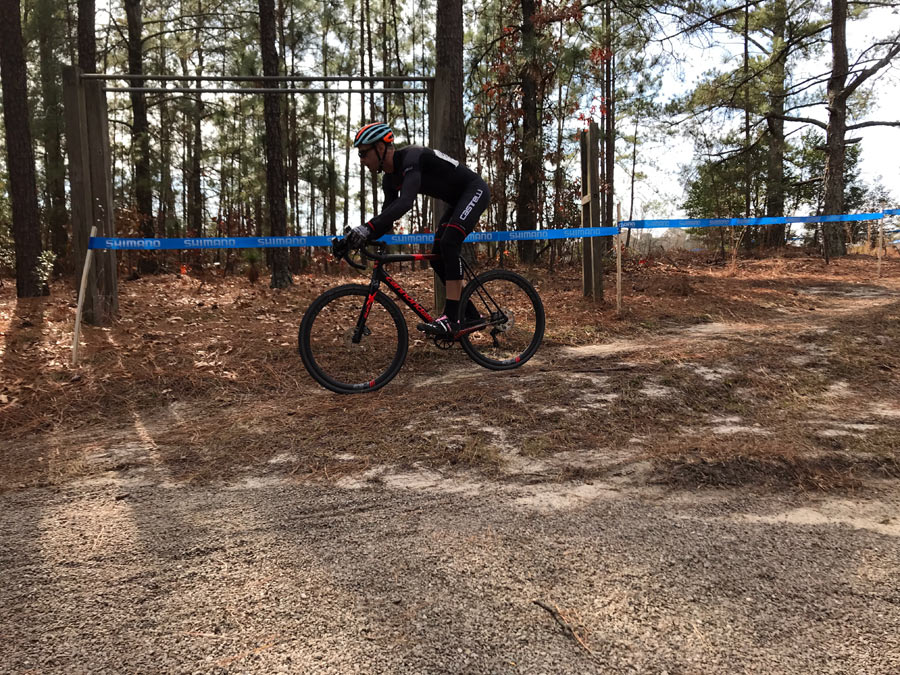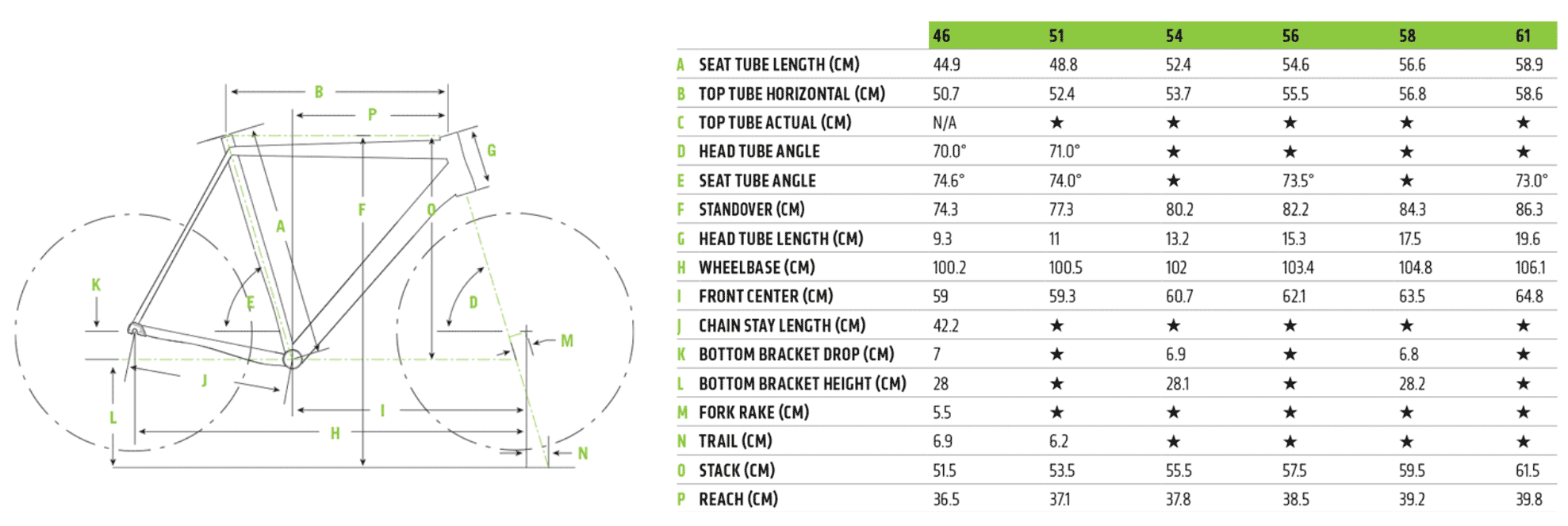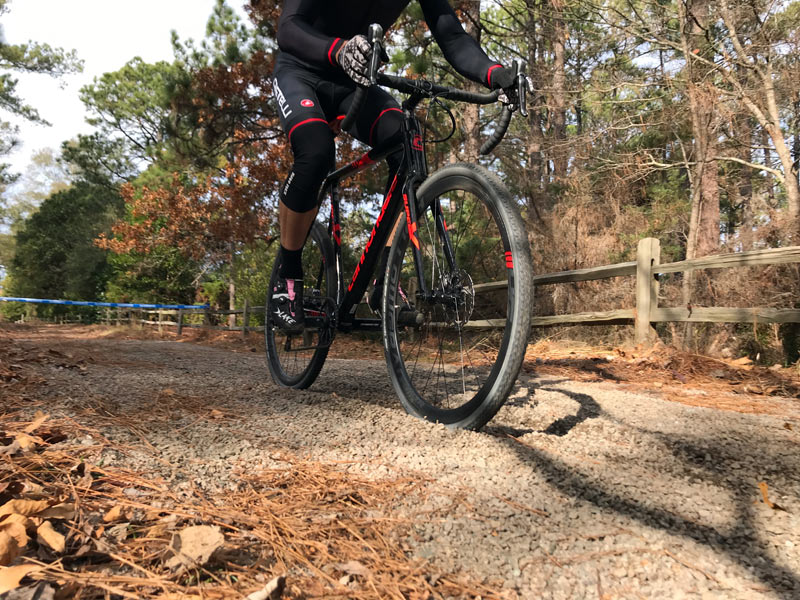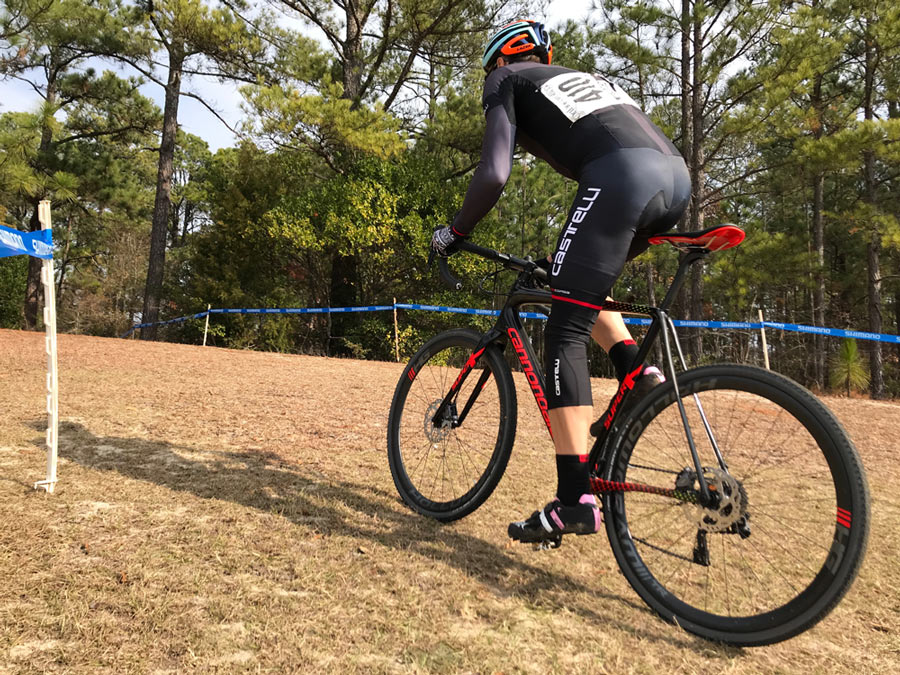Introduced in 2016, this 3rd gen Cannondale SuperX cyclocross race bike took their System Integration concept to the next level. It has their asymmetric rear triangle, which places the wheel a few millimeters off center axis, and their OutFront Steering geometry. The goals were to offer ground ripping traction, sober stability, and tight handling. It succeeds most excellently on at least two of those, and the third ain’t too far behind.
Cannondale SuperX Details & Actual Weight
The SuperX uses a full carbon frame and fork with internal cable/hose routing for everything. Which introduces the only weird thing on this bike, more on that in a minute.
There’s massive tire clearance, front and rear, accommodating up to 700×40 with room to clear mud. It’s shown here with the stock Schwalbe X-One 700×33 tires. And that asymmetric rear end…
That asymmetric rear end means upgrading the wheels is a little trickier in that you’ll have to have them laced and dished specifically for this bike’s offset. Fortunately, the stock wheels leave nothing to be desired – save for perhaps a bit quicker engagement. While not as technical as mountain biking, cyclocross does have those moments when you want a very quick reaction from each pedal stroke. To be fair, though, the hub’s engagement speed is on par with the Specialized Roval wheels tested on the Crux and pretty much every other “road” hub you’ll find in CX. As for the carbon rims, they’re appropriately wide, easy to set up tubeless, and were stiff and accurate. So, unless you break something or need a backup set of wheels for the pits, the asymmetric design is kind of a non-issue.
Now, about that weird thing. The entry port for both rear shifting and rear brake enter as though they’re going to feed into the top tube. The rear shift cable for mechanical groups then runs through the top tube, around the seatpost, and into the seatstay. The problem is, the brake cable does not. It enters the frame then immediately (and awkwardly) bends down, forward, then back into the downtube. Considering this bike was designed from the outset as a disc brake bike, it’s odd that they didn’t just design the cable port directly into the downtube. (Side note: Di2 wiring follows the brake cable, then splits off to the driveside chainstay and pops out on the bottom of that tube. The Di2 battery sits inside the seatpost.)
This is my only design gripe about the bike. If this were my own bike, I’d move the brake hose over to the front shifter cable port on the driveside, which is on the downtube. That would also make it easier to fix the only functional gripe I had with the bike: hose rattle inside the downtube. Rough ground caused brake hose rattle to the point of distraction, which is not what you want in a race. Ever, really. But especially in a race. Eventually I was able to pull it tight enough to mostly silence this, but if it were my personal bike I’d pull the fork and cranks out and run hose insulation or zip ties along the length of the hose to silence it for good.
OK, one more small gripe. The seatpost wedge that tightens into place to secure your post is not fixed into the frame. Meaning, when you remove the seatpost, it can dislodge or even fall down into the seat tube. Not a huge deal, but still kind of a pain in the butt. I also found that I had to over tighten it to prevent slippage. If it sounds like I have a lot of complaints about this bike so far, that’s not really the case. Just a few issues, and all easy enough to remedy.
Now for the good stuff, which where the actual ride quality comes into play. This is the stuff you can’t tweak, so I’m glad they got it right. The shaped stays provide ample compliance, making the bike very comfortable over the rough stuff.
Combine this with their custom SAVE 25.4mm diameter seatpost that’s designed to flex and you have a platform that lets you plow through frozen ruts and clumpy grass without skipping a beat. Comfort during those sustained efforts helps keep your cadence steady, and helps maintain traction over the stutter bumps.
Driving that power to the rear wheel is their stiff, lightweight HollowGram Si cranks with one-piece SpideRing chainring. It comes with a 40-tooth ring paired to an 11-32 Shimano cassette, which proved to be a good ratio for racing.
The bottom bracket is big, relying on a wide PF30 setup, large downtube and chunky connections to the chainstays before those flatten out to create their flex point. This provides the stiffness for pro-level power transfer.
The frame itself is made with their BallisTec carbon, which is used on their pro-level enduro mountain bikes, too. I suspect it’ll hold up to years of race-level abuse.
The top model pairs Shimano R785 Di2 hydro levers with an XTR Di2 rear derailleur and RS805 hydraulic brake calipers grabbing 160mm rotors front and rear. I’m of mixed feelings on Di2 here. It’s awesome hearing that beep when you reach the end of the cassette, so you know when you’re at the limit without having to glance down. And they shifting is flawless and less susceptible to crud. Another upside, for me anyway, is that Di2 hydro levers have better finger clearance between them and the bar, than Shimano’s mechanical shifting/hydro braking levers. But with winter gloves, it was sometimes tough to hit the right part of the shift paddles, particularly in high stress sprints or uphill grunts.
Actual weight for the size 58 with tubes in the tires is 17lb 15oz (8.13kg).
As reviewed, the SuperX Di2 retails for $4,999. It ships with Schwalbe X-One tires, but I reviewed it with the Vittoria Terreno Dry tires. Not shown, it also comes with a removable integrated out-front Garmin mount that sticks directly out of the stem’s faceplate, and they say they’ll have a Wahoo-compatible insert for it shortly. All other models use SRAM 1x builds, complete bikes start at $2,999.
Cannondale SuperX Ride Review
Everything below should be read knowing that Cannondale pro rider Stephen Hyde raced this bike to back to back national championship wins. I am no Stephen Hyde. And I will never pedal this bike as hard or as fast as him. But I can handle a bike, and it’s in the technical and rolling courses where I make up my time…and where I could tell what the SuperX was capable of.
Handling reminded me of the new Scalpel. It’s different. Not in a bad way, but it takes some getting used to, and a slight adjustment to your riding style.
It holds a straight line really well… until it dives into a turn. I wouldn’t exactly say the wheel flops into a tight turn, but that’s kind of the feeling when transitioning from a speedy straightaway or sweeper into a tight turn. It takes a little coercion to break off of it’s original line. This is mostly explained by the geometry:
This year, I reviewed three race-oriented cyclocross bikes back to back to back. The first was the Sage PDXCX, followed by the Specialized Crux, then the SuperX. In order, they went from one end of the handling spectrum to the other. The Sage had the tallest BB and shortest Trail, hence the snappiest handling at the expense of high speed stability. The Crux sat in the middle, and the SuperX has the longest trail and was by a good margin the most stable. In order, each bike’s Trail figures are 55mm, 59mm and 62mm. Of course, that’s only one number, but the Cannondale also has the lowest BB (59mm drop) and the longest front-center (635mm). Put it all together and this is a bike that really, really likes to hold its line.
Which is a great thing on wide open, fast courses or those with loose surfaces like deep gravel and sand. Or snow and slush. The course shown in the pics above had long downhill sections of such gravel and sand, and I wasn’t surprised to see another guy on a SuperX at the front of the pack with me on this course (I finished third, he was right in front or behind me…can’t remember).
The front end of the bike is in charge of the handling. The rear has other duties, namely rider comfort and traction. Cannondale wanted the bike to power through such surfaces, and rip up the short power climbs that make up cyclocross courses. So they used their Ai rear end to keep the chainstays very short. They’re only 0.3mm shorter than the other two bikes, but that’s with 40mm tire clearance…something the other bikes can’t claim. Which is why the SuperX comes in an SE version that’s billed as their gravel race bike, and my hunch is it excels as such.
The comfort comes from their flattened chainstays, shapely seatstays (and the carbon layup inside them) and their intentionally flexing SAVE seatpost. Those three provide noticeable bump absorption and vibration reduction, which helps conserve rider energy and improve control. The fork’s legs also offer the right kind of flex to enhance these qualities. As a package, it’s a very comfortable bike that can be raced hard and fast. Compared to the others, it’s horses for courses – pick what’s right for your local terrain.
I’d sum the Cannondale SuperX up as a light, capable race bike that excels on fast courses and could easily double as your year-round gravel bike.
